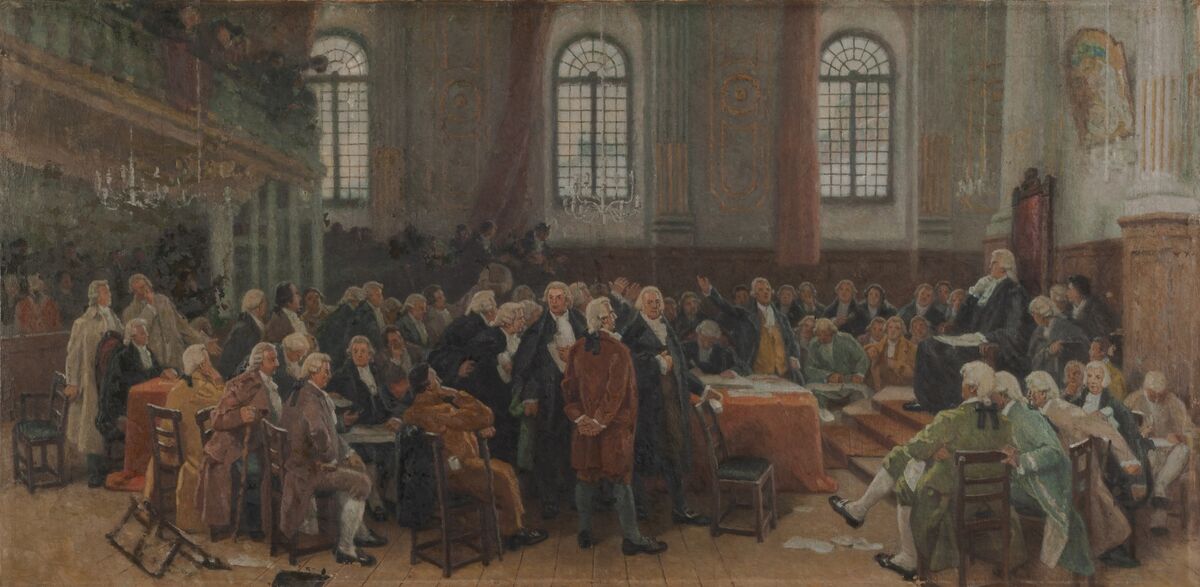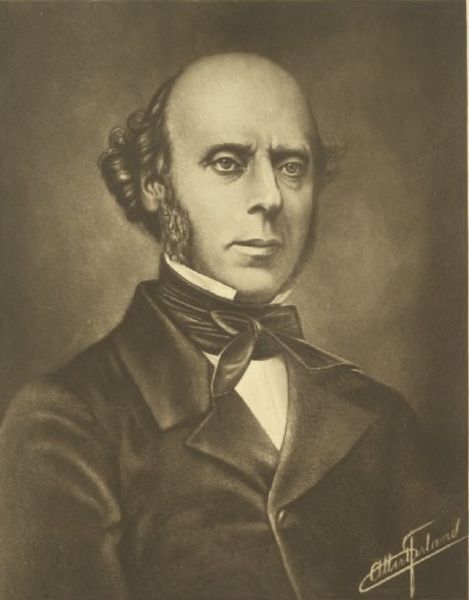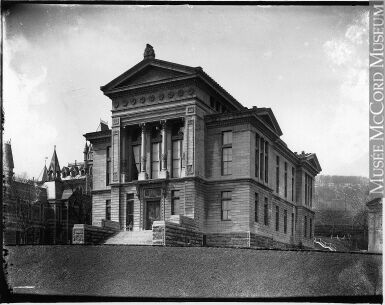The Province of Quebec had been under British control since the War of the Conquest in 1760. Most of the people in this colony were Francophones, but they still had to deal with British immigration, including Loyalists.
Both Anglophones and Francophones wanted a more democratic political system. The Crown decided to separate the Province of Quebec into two new territories: Upper Canada and Lower Canada. It also granted each of the two colonies a Legislative Assembly. These new elements were set out in a constitution introduced on December 6, 1791, called the Constitutional Act.
The Constitutional Act contained one clause related to territory. The Province of Quebec ceased to exist and was divided into two distinct territories: Upper Canada and Lower Canada. The Ottawa River was the border between Upper and Lower Canada. Each province had its own government that could make decisions that only affected its own territory, but the governor could veto any decision made by either of these governments.

Data source: RÉCIT national, social universe domain, n.d.
Lower Canada covered much of present-day Quebec and had a population of 160 000, and about 16 000 people spoke English.
In Lower Canada, the property deeds of the seigneurial system were officially recognized and the Catholic hierarchy and faith were respected. However, some property was strictly reserved for the Protestant clergy. The legal system incorporated both the French Civil Code and the English Criminal Code.
Upper Canada was located southeast of present-day Ontario. It was home to approximately 15 000 Anglophones, many of whom were Loyalists.
In Upper Canada, the population was Protestant (land was set aside for the Protestant clergy) and the English Civil and Criminal Codes were applied.
With the Constitutional Act, British authorities decided to separate the two linguistic communities of the Province of Quebec, namely those who spoke English and those who spoke French.
While this decision to divide the territory into linguistic communities worked for the people of Upper Canada, who were almost all Anglophones, this division presented several challenges for Lower Canada. Within the borders of Lower Canada, the two linguistic groups coexisted and were represented by the same Legislative Assembly.
This linguistic duality was the main reason why the situation in Lower Canada was unlike the situation in Upper Canada. Having two groups from the same society speaking different languages had a unique impact on all areas of community life.

Language Debate at the first Legislative Assembly of Lower Canada, January 21, 1793
Source: Study on “The Language Debate” [Canvas], Huot, C., 1910-1913, MNBAQ, (URL).*Rights reserved
This is why institutions in Lower Canada were often duplicated, meaning there was one for each population. There were Francophone newspapers and Anglophone newspapers, Francophone Catholic churches and Anglophone Protestant churches, Francophone schools and Anglophone schools. This also applied to elected members of the Legislative Assembly as well as many other parts of life in Lower Canada.
These institutions and individuals played identical roles, but mirrored the very different interests of the group they represented. This situation slowly caused tensions to rise between Francophones and Anglophones. Each side felt a sense of pride in belonging to their specific group or nation. This is known as nationalism.
-
An institution is an organization governed by rules and laws that play a specific role in society. This role may be political, social, economic, religious, etc.
-
Nationalism is an ideology that favours a sense of belonging and pride that a group feels towards a nation. This ideology often leads to a group of people demanding more power and independence within a State. It is a political ideology that ultimately aims to create a sovereign nation.
Since the War of the Conquest, the population of Lower Canada had developed a sense of pride in belonging to their specific nation, the nation of the Canadiens. This sentiment helped shape and unite the population around French Catholic culture rather than the British community and culture. The fact that British authorities and institutions (the governor, English newspapers, etc.) often referred to Canadiens as being inferior and weak, to maintain their favourable position as conquerors, only served to increase the desire of Canadiens to form a separate group.
In politics, literature and economics, Canadiens sought to compete with the British and promote the Canadien culture and people.

He is the author of Histoire du Canada, the first volume of which was published in 1845. This was the first time that an author had compiled such a detailed account of French-Canadian history in one book.
Source: François-Xavier Garneau [Portrait], Shortt, A., 1914, Wikimedia commons (URL). CC0 1.0.
Anglophones in Upper Canada and Lower Canada still thought of themselves as British. Their loyalty to British institutions and the monarchy also extended to the English language.
There was a strong sense of superiority amongst the Anglo-British population over the Canadiens due to their victory in the War of the Conquest. They also held most of the prominent positions and had more wealth. They based several institutions in the colony on the British model. This is known as imperialism.
Imperialism is the desire for cultural, political, economic and military domination by one nation over another.
Institutions modelled on British culture were recreated in Lower Canada, including the Legislative Assembly, the Bank of Montreal, McGill University, etc.

Source: Redpath Museum, McGill University, Montreal, QC, circa 1910 [Photograph], Wm, Notman & Son, Circa 1910, Musée McCord (URL). CC BY-NC-ND.
Huot, C. (1910-1913). Study on “The Language Debate” [Canvas]. MNBAQ. https://collections.mnbaq.org/fr/oeuvre/600003329 *Extrait employé par Alloprof conformément à la Loi sur le droit d’auteur dans le cadre d’une utilisation équitable aux fins d’éducation
Shortt, A. (1914). François-Xavier Garneau [Portrait]. Wikimedia commons. https://commons.wikimedia.org/wiki/File:Francois-Xavier_Garneau.jpg?uselang=fr
Wm, Notman & Son. (Circa 1910). Redpath Museum, McGill University, Montreal, QC, circa 1910 [Photograph]. McCord Museum. http://collections.musee-mccord.qc.ca/fr/collection/artefacts/VIEW-2605